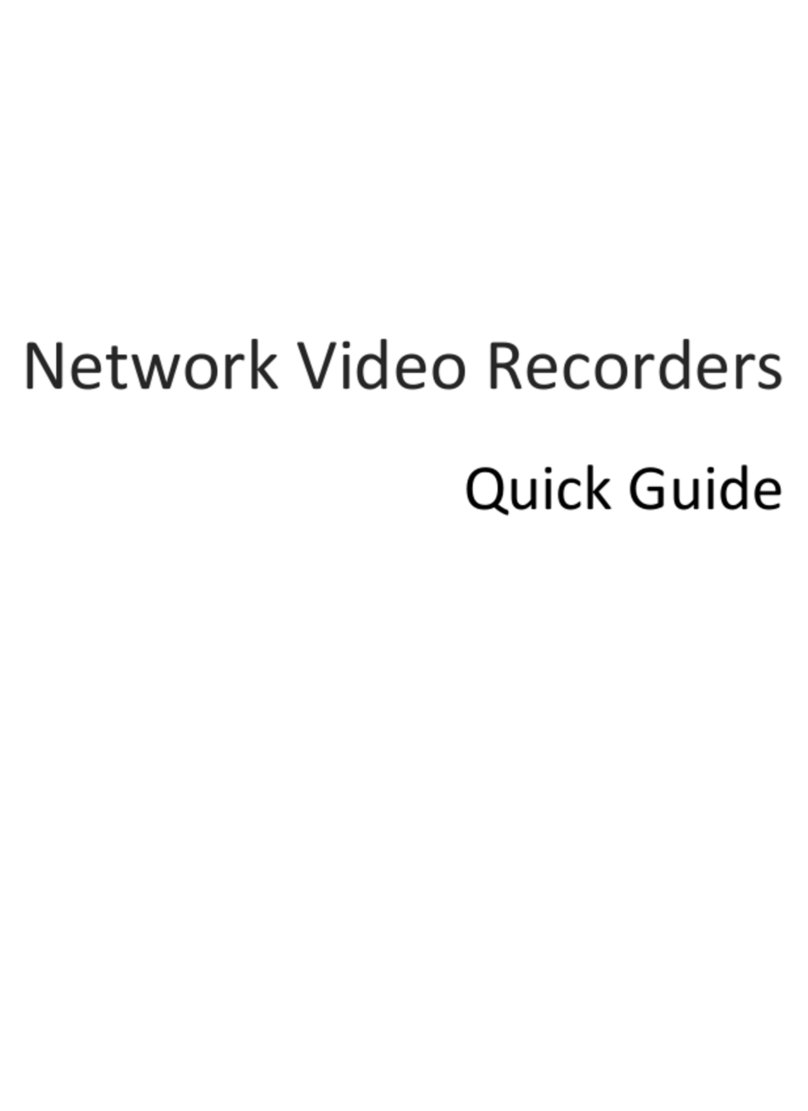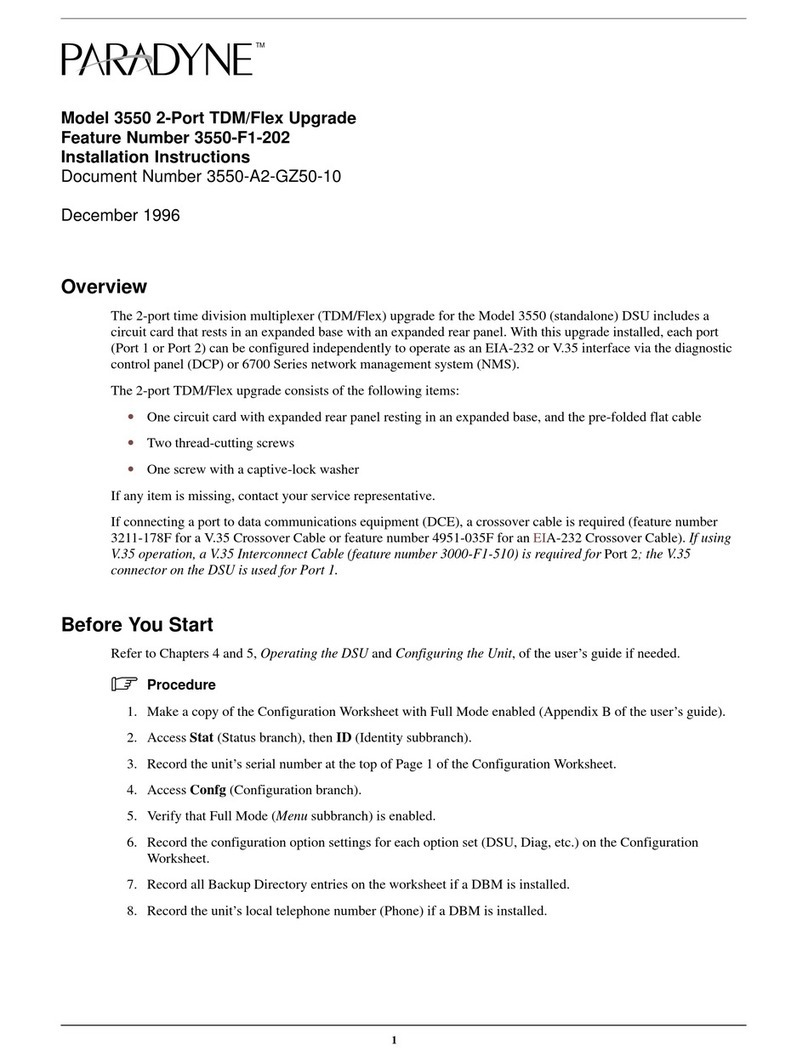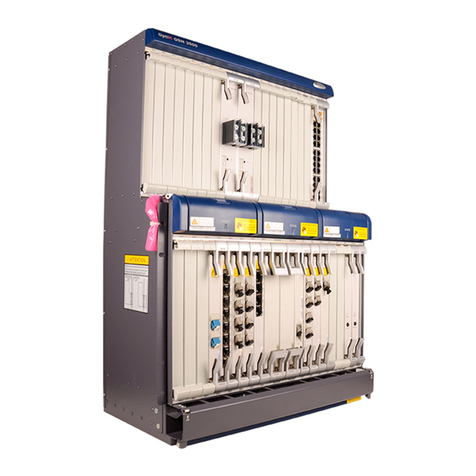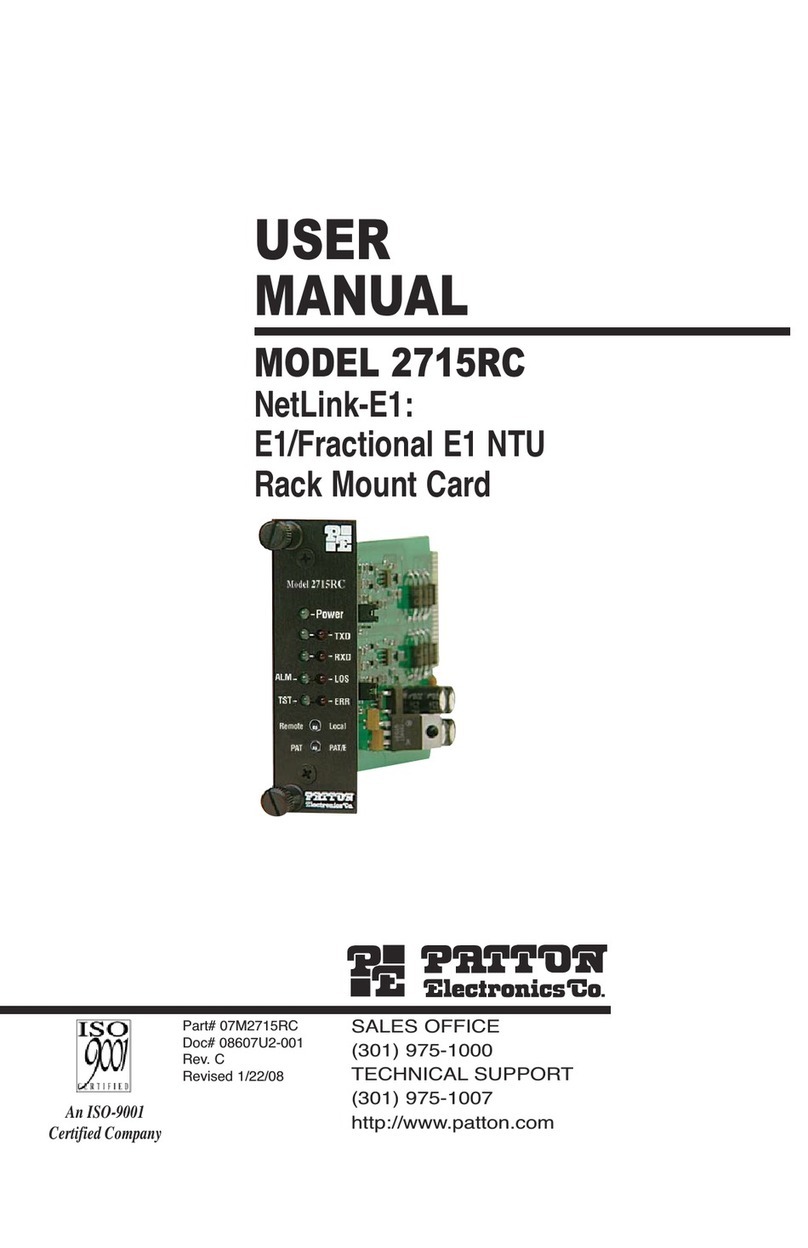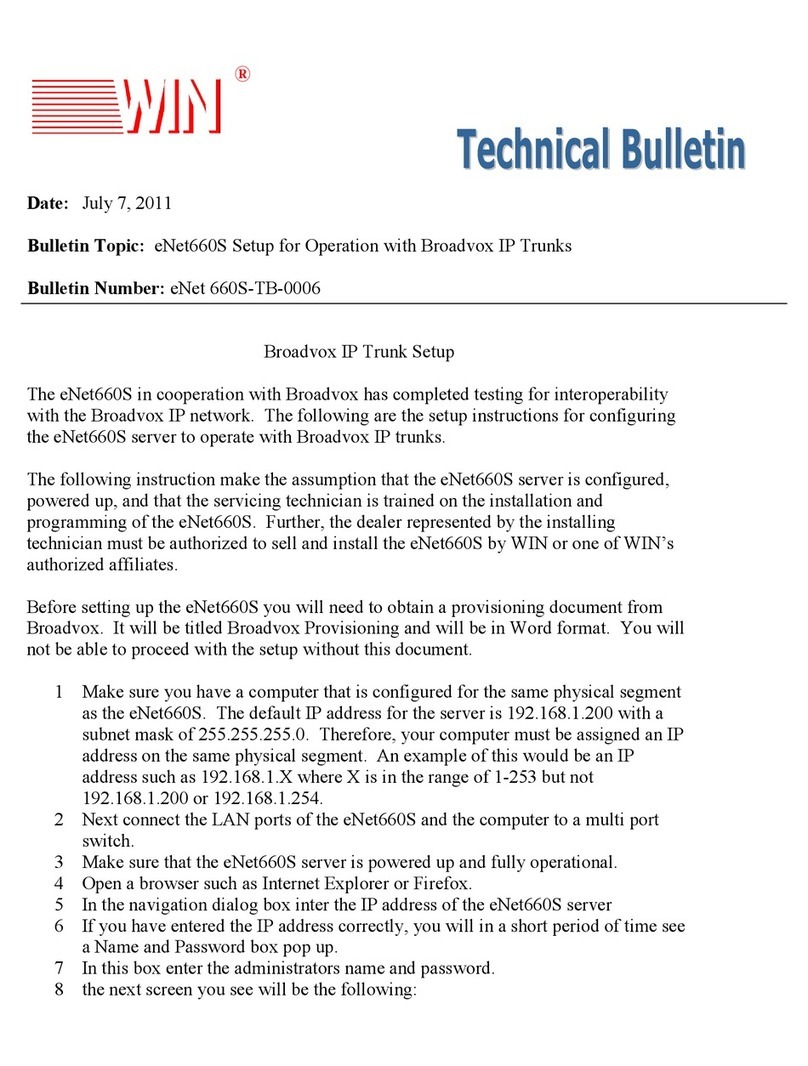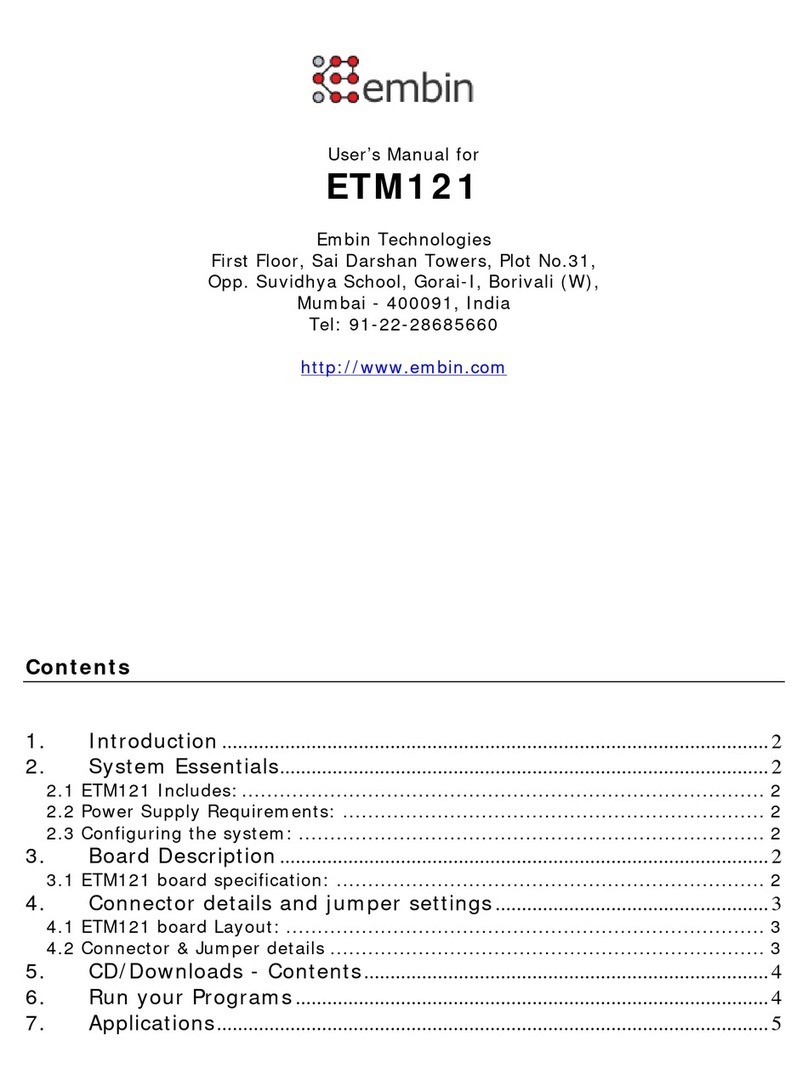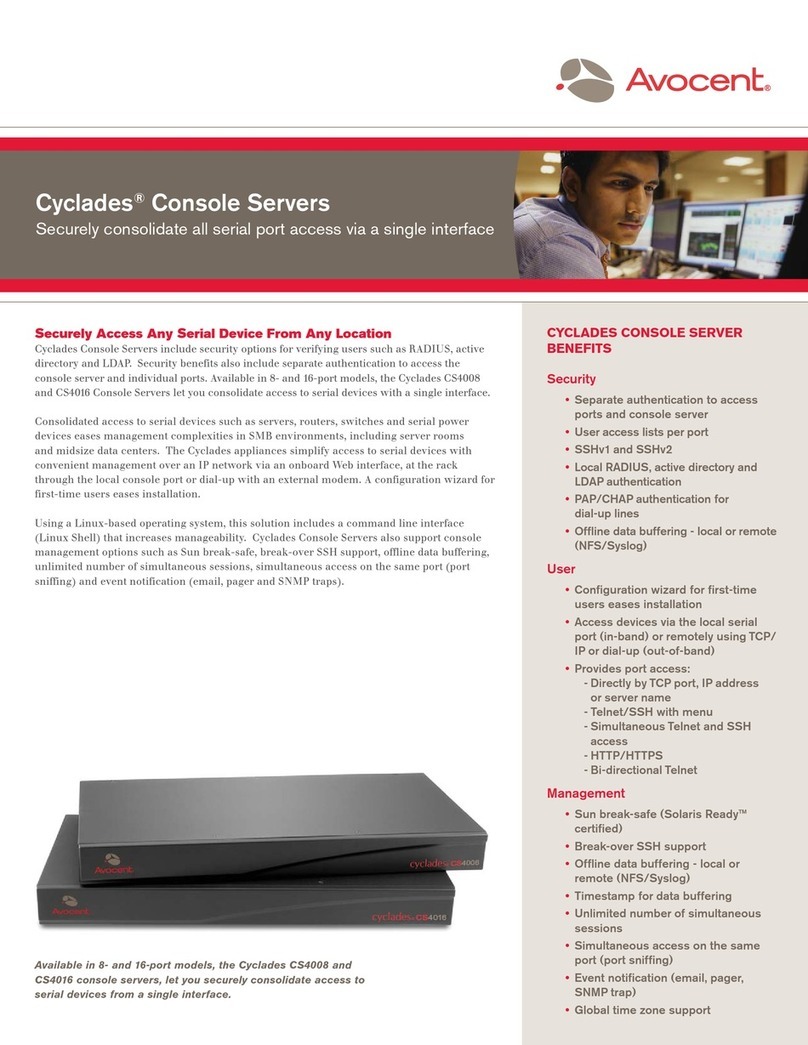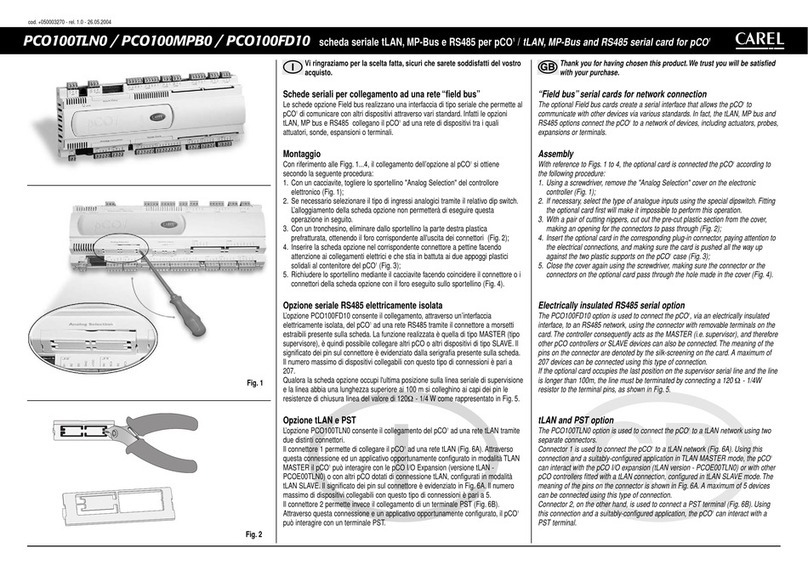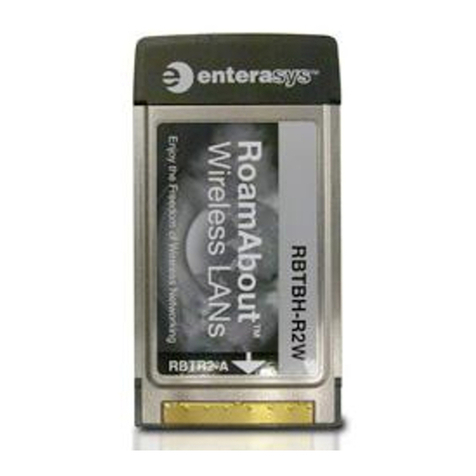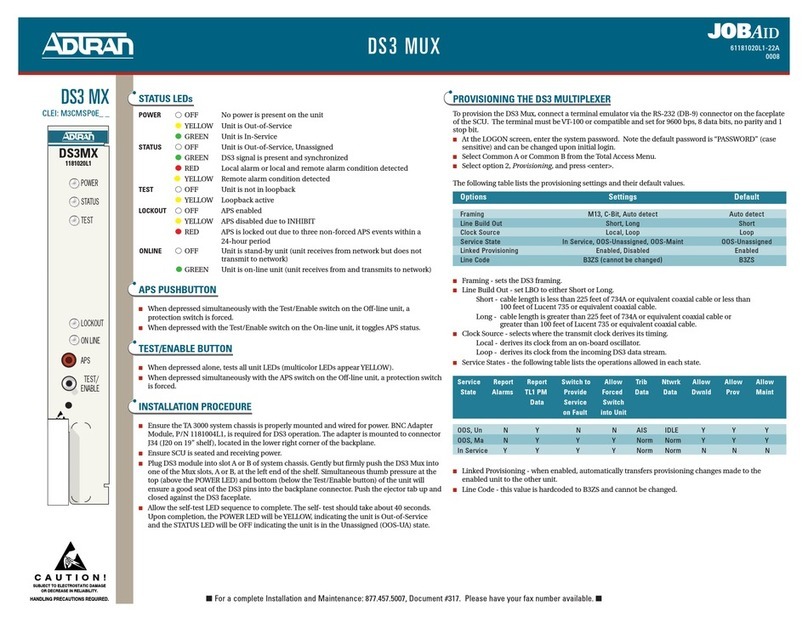ENCARDIO RITE RITE GEOSYSTEMS EWN-01V User manual

USERS MANUAL
MINING
BRIDGES
METRO & RAIL
STRUCTURAL
CONSTRUCTION
HYDROELECTRIC
TUNNELS
Encardio-Rite Electronics Pvt. Ltd. A-7,Industrial Estate, Talkatora Road, Lucknow, UP-226011, India | geotech@encardio.com | www.encardio.com
Encardio-Rite Group -
India | Bhutan | Bahrain | Qatar | Saudi Arabia | UAE | Peru | Greece | Spain | UK | USA
Doc. # WI 6002.118 Rev. 03 | July 2023
WIRELESS VIBRATING WIRE NODE
Model EWN-01/05/10V

Users’ Manual EWN-01V Vibrating Wire Node
www.encardio.com
1INTRODUCTION 1
1.1 Vibrating wire node overview 1
1.2 Wireless network 1
1.3 Conventions used in this manual 1
1.4 How to use this manual 1
2GENERAL DESCRIPTION 3
2.1 Model EWN-01/05/10V Vibrating wire node 3
2.2 Model EWG-01 gateway 3
2.3 System components 3
3TECHNICAL SPECIFICATION 5
4PRE-INSTALLATION PREPARATIONS 6
4.1 Pre-installation checks 6
4.2 Setting up the Gateway and vibrating wire nodes location 6
4.3 Setting up the Gateway & Tilt meter 6
4.4 Sampling Interval for Vibrating wire node 6
5QUICK START GUIDE 7
5.1 Gateway Setup 7
5.2 VW Node Setup 8
6CONFIGURING VW NODE 10
6.1 Setting up VW node 10
6.2 Connection VW Node to phone 11
6.2.1 Connection through Bluetooth 11
6.2.2 Connection through OTG 12
6.3 Config Node 13
6.4 System Setup 14
6.5 Sensor Reading 16
6.6 Download Data 17
6.7 File format 17
6.8 View Data 18
6.9 Upload File 19
6.10 Node Diagnostic 19
6.11 Factory Default 20
6.12 System Information 21
7RE-CONFIGURING GATEWAY & NODES AFTER INSTALLATION 22
7.1 Re-configuring gateway via node 22
7.2 Re-configuring nodes via gateway 23
7.3 Re-configuration other nodes in same network via node 24
8REGISTER NODE AT GATEWAY 27

Users’ Manual EWN-01V Vibrating Wire Node
www.encardio.com
9INSTALLATION PROCEDURE FOR NODE 28
9.1 Wall mounting 28
9.2 Mast mounting 28
10 TROUBLESHOOTING 30
10.1 Unable to connect Node over Bluetooth 30
10.2 Unable to connect Node with FTDI-OTG Cable 30
10.3 Unable to communicate with Gateway 30
11 SAFETY AND WARNINGS 31
11.1 Operation Safety 31
11.2 Battery caution & warning 31

Users’ Manual EWN-01V Vibrating Wire Node
Page | 1
1 INTRODUCTION
1.1 Vibrating wire node overview
Model EWN-01/05/10V series of wireless vibrating wire nodes are designed to expand the data collection
possibilities from vibrating wire geotechnical sensors via wireless network, eliminating the need for running
lengthy cables. It is a reliable integrated system, which is capable of exciting and sampling vibrating wire
sensors and reporting measurements through wireless communications network to the Gateway.
One of the significant advantages of vibrating wire wireless nodes is their ability to provide accurate and
reliable measurements in remote or inaccessible locations. By eliminating the need for physical wiring
connections, these nodes can be deployed in challenging environments where traditional wired sensors would
be impractical or impossible to install. With their wireless connectivity, these nodes offer convenience,
scalability, and cost-effectiveness, empowering industries to gather critical data in real-time and make
informed decisions based on accurate measurements.
1.2 Wireless network
Wireless sensors are vital in monitoring construction sites, large structures and landslide areas. They are
extensively used in applications where geotechnical and other sensors are used for data collection and
transfer it to a central server for access by multiple users. Encardio-rite offers an innovative network solution
that allows real-time monitoring of not only wireless vibrating wire sensor but also other geotechnical and
structural sensors in challenging conditions with reliable data transfer without any delay.
In an end-to-end wireless monitoring system from Encardio-rite, the vibrating wire nodes are interfaced with
the long range, low power radio frequency network to gateway. The vibrating wire nodes send recorded data
to the gateway through the RF network with utmost reliability. The gateway then uploads the collected data
from nodes to the central/cloud server.
The system operates on ISM sub 1 GHz operating frequency bands adjustable to requirement of each
territory. The system can be adjusted to different frequency bands; for example:
India 865 – 867 MHz
Europe 868 MHz
USA/Canada/Singapore/Australia 915 MHz
A detailed reference for frequency bands allowed in different Countries is available at:
https://www.thethingsnetwork.org/docs/lorawan/frequencies-by-country.html
The gateway also has provision to set the frequency band, depending upon the Country.
1.3 Conventions used in this manual
WARNING! Warning messages calls attention to a procedure or practice that if not properly followed could
possibly cause personal injury.
CAUTION: Caution messages calls attention to a procedure or practice, that if not properly followed may
result in loss of data or damage to equipment.
NOTE: Note contains important information and is set off from the regular text to draw the users’
attention.
1.4 How to use this manual
This users’ manual is intended to provide you with sufficient information for making optimum use of vibrating
wire nodes in your applications.

Users’ Manual EWN-01V Vibrating Wire Node
Page | 2
To make the manual more useful we invite valuable comments and suggestions regarding any additions or
enhancements. We also request to please let us know of any errors that are found while going through the
manual.
NOTE: Installation personnel must have a background of good installation practices and knowledge of
fundamentals of geotechnics. Novices may find it very difficult to carry on installation work. The
intricacies involved in installation are such that even if a single essential but apparently minor
requirement is ignored or overlooked, the most reliable of instruments will be rendered useless.
A lot of effort has been made in preparing this instruction manual. However best of instruction
manuals cannot provide for each and every condition in field that may affect performance of the
sensor. Also, blindly following the instruction manual will not guarantee success. Sometimes,
depending upon field conditions, installation personnel will have to consciously depart from
written text and use their knowledge and common sense to find solution to a particular problem.
NOTE: The sensor is normally used to monitor site conditions and will record even a minor change that
may affect behaviour of structure being monitored. Some of these factors amongst others, are,
seasonal weather changes, temperature, rain, barometric pressure, nearby landslides,
earthquakes, traffic, construction activity around site including blasting, tides near sea coasts, fill
levels, excavation, sequence of construction and changes in personnel etc. These factors must
always be observed and recorded as they help in correlating data later on and also may give an
early warning of potential danger or problems.

Users’ Manual EWN-01V Vibrating Wire Node
Page | 3
2 GENERAL DESCRIPTION
2.1 Model EWN-01/05/10V Vibrating wire node
Model EWN-01/05/10V wireless vibrating wire node consists of a small, self-contained unit equipped with a
sensor module that excites the vibrating wire sensor and reads the resonance frequencies, a radio-transceiver
with an antenna, a processor that controls the two modules and power source.
The vw node collects the sensor data and transmits it wirelessly to Gateway. The unit is mounted inside a
compact weatherproof enclosure. The data is transmitted through the long range (LoRa), low power radio
frequency network to the gateway without any signal degradation.
The node is available in variants to connect a single (model EWN-01V) to five (model EWN-05V) or ten
(model EWN-10V) sensors with inbuilt thermistor. The complete range of vibrating wire sensors can be
connected to wireless node including:
Piezometers and water level sensors
Strain gages
Pressure cells
Temperature meters
Displacement sensors, extensometers, crack meters, joint meters
Settlement monitoring sensors
The nodes can be configured to scan and transmit data at any frequency between 2 minutes to 2 hours,
depending on site requirements. The system automatically mitigates well-known wireless problems like signal
blockages and interference, allowing the sensors to reliably send their data to the gateway every time. Every
single radio transmission in the system is secured using AES-128 encryption to maximize security of the
sensor data gathered by the system
2.2 Model EWG-01 gateway
Encardio-rite model EWG-01 wireless gateway is used as a main networking hardware, which uploads data
gathered from all the VW nodes (connected to vw geotechnical sensors) to the Encardio-rite cloud server or a
third party server. In addition, it passes control messages through the network to ensure seamless operation.
The gateway is ideally installed at a location with cellular network, in line of sight of the installed nodes. It
serves as an exit point/central hub for wireless data obtained from the sensors as the readings pass through
or communicate with the gateway prior to being routed to a FTP or cloud server.
2.3 System components
Provided by Encardio-rite
Model EWN-01V- Wireless vibrating wire node with antenna
Model EWG-01 Gateway with antenna
Gateway and Node mounting accessories
RS-232 Bluetooth modem/ USB to RS-232 FTDI cable
Application software for Android Smartphone
Application software for Windows
To be arranged by Client
Laptop or Android Smartphone

Users’ Manual EWN-01V Vibrating Wire Node
Page | 4
Activated data SIM card (for Gateway)
D-Cell Li-SOCl2 3.6 V 14.5 Ah batteries nominal Voltage - 2 no. per Node and 2 no. for Gateway
Power supply unit 9-30 V, 1 A for Gateway (12 V, 1 A power supply easily available can be used)

Users’ Manual EWN-01V Vibrating Wire Node
Page | 5
3 TECHNICAL SPECIFICATION
Basic
Internal Battery 2X3.6V Li-Ion Battery (D-cell ER34615M)
External Power
9V Standard adaptor or EBS-01(available on order)
Operating Current 25 mA (max)
Dimension 120X100X81.5(LXWXH) without antenna
159X100X187(LXWXH) with antenna
Weight 0.807 Kg (Without Battery)
1.0045 Kg(With Battery)
Storage
3 Million data points
Primary Sensor
Sensor Type
Vibrating Wire Sensor
No. of VW Channel 1
Accuracy
± 0.1% FS
Sensor Excitation Freq 400-6000 Hz
Excitation Voltage
5V
Temperature Sensor
Sensor Type
3K thermistor
Accuracy 0.1°C
Range
-20°C to +70°C
Enclosure
Material
Aluminium-Alloy Die casting 12(Epoxy Polyester Powder Coating)
IP Rating IP-65(IS-60947 Part-1:2004)
Fire Proof
Approved
Protocol
ER Protocol
Proprietary Encardio Protocol
Radio
LoRa Chipset
SX1276 Global Sat
Frequency EU US ROA
863-870 MHz 902-928 MHz 920-928 MHz
Transmit Power 863-870 MHz (EU) 902-928 MHz(US) 920-928 MHz(ROA)
14 dBm 20 dBm 20 dBm
Baud Rate 9600 bps(Max)
Receiver Sensitivity
-132 dBm
Transmission Distance (1 ~ 15 KM )*
* 800 meter in urban areas

Users’ Manual EWN-01V Vibrating Wire Node
Page | 6
4 PRE-INSTALLATION PREPARATIONS
4.1 Pre-installation checks
Before installation please check the tilt meter and gateway for any physical damage.
Open the tilt meter and gateway box to check if the internal wirings are intact.
4.2 Setting up the Gateway and vibrating wire nodes location
Selecting correct locations for Gateway and tilt meter is important, especially in case more than one tilt meter
are being installed at site and connected to single gateway.
The first step is to install the Gateway at a location that is in line of sight with all the installed tilt meters or in
line of sight with most tilt meters. The best location will have to be determined at the site itself. For best
results, the link between the gateway and the tilt meter should be strong, preferably better than -100 dBm.
Please note, the stronger the link better will be the results.
4.3 Setting up the Gateway & Tilt meter
It is recommended that the setting up and configuration of nodes and gateway is done before mounting the
them at respective installation location.
The gateway configuration needs to be done before nodes are configured. For setting up and configuring the
gateway, refer to User’s Manual # WI6002.117 on Gateway. Configuration of vibrating were nodes is
discussed in Section 6 of this manual.
For convenience, a “Quick Start Guide” is included in Section 5 to give a brief and quick idea.
4.4 Sampling Interval for Vibrating wire node
When configuring the Encardio-rite wireless system, it is crucial to select appropriate sampling intervals to
ensure the network operates smoothly without any data loss.
The table below provides guidance on sampling interval selection for vw nodes based on the network size::
Number of Nodes
Minimum Sampling interval(Minutes)
1
4
10
6
50
16
100
28
150
41
200
53
The General formula to calculate Sampling interval for vibrating wire node is:
Sampling Interval (Seconds) = (15*No. VW Node) + 180

Users’ Manual EWN-01V Vibrating Wire Node
Page | 7
5QUICK START GUIDE
A quick start guide for both setting up and configuring Gateway and VW Node is given below. Please note that
the gateway must be configured first.
5.1 Gateway Setup
Step 1: Open the gateway box. Insert the 4G Sim card. Connect both the antenna’s into their respective
connector.
Step 2: Insert the battery into battery holder with their correct polarity.
Step 3: Connect any standard DC Power (9-30 V, 1 A) into Connector named as “IN” on the PCB with
correct polarity.
Step 4: Switch on the Gateway and wait for 1 minute.
Step 5: Install the EWA-01 apk file (provided with supply) into android phone and allow all the permissions
asked during apk installation. After installation close the application.
Step 6: Go to android phone’s Settings>>Connections
Step 7: Turn ON the Smartphone Bluetooth
Step 8: Press on Scan option to search nearby Bluetooth devices
Step 9: Press on “EWG-01 Serial Number” found from the scanned device list. Gateway serial no. is
written on the PCB.
Step 10: Pair the Gateway with Android phone using passkey = 6965785054
Step 11: Now open EWA-01 application on Android phone
Step 12: Select the paired Gateway to connect the application with gateway.
Step 13: Once connected go to Config Gateway >> Edit
Enter Gateway ID, Installation date and select Network ID, Frequency plan
Enter Latitude and Longitude information either manually or through map.
Note down the Network ID.
Click on save button.
Step 14: Go to Cellular Setup>>Turn on modem to check for the signal strength then >>Turn off modem
Go to EDIT enter the FTP credentials for data upload and then UPDATE
Go to EDIT enter the FTP credentials for two way communication and then UPDATE
Enter APN of the network service provider and UPDATE
Click the FTP TEST tab to verify the communication between Gateway and FTP server
Step 15: Go back to previous screen and Click on Scheduler Setup>> Update Date/Time or Sync with
Phone to set the clock of the gateway.
Click on the Erase Gateway Memory to erase residual data if any.
Configure the Next Scan start time and scan interval by clicking on the clock icon’s provided in line
with them and then update. Go back to the home screen and press the back button to disconnect
the gateway from mobile phone.
With this, the basic configuration of gateway is completed. Now we will move forward to configure
the node.

Users’ Manual EWN-01V Vibrating Wire Node
Page | 8
5.2 VW Node Setup
Use step by step procedure to configure the VW Node.
Step 1: Open the node box. Connect the RF antenna (Provided with supply).
Step 2: Connect the vibrating wire sensor into designated connector with accurately.
Step 3: Insert the batteries into battery holder with their correct polarity.
Step 4: Optional - Connect any standard DC Power (9V, 1A) into Connector named as “EXT” on the node
PCB with correct polarity.
Step 5: Switch on the node and wait for 30 sec.
Step 6: Connecting the node to phone:
1. Through Bluetooth Modem
Insert the RS-232 Bluetooth Modem (provided with supply) into DB9 connector and switch on
the Bluetooth modem
Go to android phone’s Settings>>Connections
Turn ON the Smartphone Bluetooth
Press on Scan option to search nearby Bluetooth devices
Press on “ERB-01 Serial Number” found from the scanned device list. Node serial no. is
written on the PCB.
Pair the Node with Android phone using passkey = 6965785054
Now open EWA-01 application on Android phone
Select the paired Node to connect the application with Node.
2. Through RS-232 –USB-OTG Cable
Switch on the node and connect it to the Smartphone using the FTDI to OTG adaptor provided
with supply. Once connected a prompt window will appear. Tap the FTDI button, Home screen
of node will appear. Refer to the section 6.2.2 of this users manual for more details on this.
Step 7: Once connected through any one methods explained in Step 5 go to Config Node >> Edit
Enter Node ID, Installation date and select Network ID (same as Gateway network Id), Frequency
plan(Same as selected in Gateway ).
Enter Latitude and Longitude information either manually or through map. Click on Save button.
Step 8: Go to Node Diagnostic >> Start Test to see the signal strength and test packet status and then
Stop test.
Step 9: Go back to previous screen and Click on System Setup>> Update Date/Time or Sync with Phone
to set the clock of the node.
Click on the Erase Node Memory to erase residual data if any.
Click on the Edit under Edit Sensor Parameter to enable/disable the parameter to report along with
their units of choice, click on Save.
Step 10:Click on “VW SENSOR SETTINGS” enter the sensor ID, Sensor comments. Select the sensor
manufacturer, sensor model etc. After that click on “NEXT” button and enter the sensor polynomial
coefficients as per the sensor calibration certificate also select the thermistor type from the
dropdown. Click on “SAVE” button
Step 11: Go back to previous screen and click on Sensor Reading >>Start to monitor the parameters
selected in step 9. After monitoring click on the >> Stop

Users’ Manual EWN-01V Vibrating Wire Node
Page | 9
Step 12: Go back to Home screen click on Register Node at Gateway and wait for some time. If everything
has been followed as per the steps stated above the node will successfully registered to the
gateway.
With this, we have completed the basic configuration of Encardio-rite wireless systems (nodes and
gateway). User can close the box.

Users’ Manual EWN-01V Vibrating Wire Node
Page | 10
6 CONFIGURING VW NODE
6.1 Setting up VW node
Open the top cover with screw driver. Description of each part of the node is given in the figure 6-2
Figure 6-1 EWN-01V Single channel vw node
Figure 6-2 EWN-01V Single channel node details
Connect the RF antenna (provided with supply) to the node properly.
Connect the vibrating wire sensor cable to designated connector in node (VW+,VW-, SHD, T+,T-) as
shown in figure 6-3.
Battery holders
(on lid)
Bluetooth Dongle/
FTDI Cable
connector
Mounting
holes
DC Input (Ext)
On/Off Switch
Battery wire
VW sensor
input
RF Antenna
connection
Phillips head
screws

Users’ Manual EWN-01V Vibrating Wire Node
Page | 11
Figure 6-3 VW sensor connection to EWN-01V single channel vw node
Insert the batteries carefully into Battery holder with their correct polarity. Ensure that the positive “+” and
negative “-” are correctly connected, then switch on the node.
In case fast scanning is required, connect any standard DC power adaptor (9 V, 1 A) to “DC Input”
Or, Encardio rite make solar battery charger can also be used (available against order).
After power up, wait for 30 seconds as during this time node performs its internal operations.
6.2 Connection VW Node to phone
Install the apk file (provided with the supply) for “EWA-01” app on the phone. App shortcut will be available in
the list of application software, as shown in figure 6-5 (a). Open the application and allow all the permissions
required for proper functioning.
6.2.1 Connection through Bluetooth
The VW node can be connected with mobile by using Bluetooth. Plug Bluetooth modem (provided with
supply) at 9 pins D-sub connector of the Node. Make sure that modem must be configured for 115200 baud
rate and hardware flow must be OFF. Verify DIP switch settings with following figure 6-4.
Figure 6-4 Bluetooth modem DIP switch settings
Turn-on the Bluetooth modem by pressing ON/OFF switch located near modem’s battery compartment.
The power indicator of Bluetooth modem will glow in GREEN color to ensure that Bluetooth modem is ON.
VW sensor
connection

Users’ Manual EWN-01V Vibrating Wire Node
Page | 12
Turn on Bluetooth of the android phone and go to Bluetooth settings. Click on “scan” button. Phone will
show the list of Bluetooth devices found. Find the Node Name and serial number on phone screen and
click for pairing the phone with Node. Once pairing button is pressed it will ask to enter passkey for
authentication.
Enter pairing code “6965785054” and then press OK. On successful authentication, it will show that
device is paired. Now phone is paired with Node.
Open the "EWA-01" apk installed on Android phone. It will show the list of paired Nodes as shown in
figure 6-5 (b). Select the Node that you paired earlier from the list. It will take you to the home screen of
the node as shown in figure 6-7 (b).
(a) (b)
Figure 6-5
6.2.2 Connection through OTG
Switch on the node and connect it to the Smartphone using the FTDI to OTG adaptor provided with
supply, as shown in figure 6-6 below.
Figure 6-6 EWN-01V VW node connected to Android phone with FTDI cable via OTG adaptor
Once connected a prompt window will appear as shown in the figure 6-7 (a). Click on the FTDI button,
home screen of “RF Node” will appear, as shown in figure 6-7 (b).

Users’ Manual EWN-01V Vibrating Wire Node
Page | 13
At the home screen various information about the node can be seen. Detailed description of each
segments required for configuration is given in the subsequent sections.
(a) (b) Home Screen
Figure 6-7 Home screen
6.3 Config Node
Click on the “CONFIG NODE” tab from Home screen, a window as shown in the 6-8 (a) will appear. Click on
‘Edit’ button to input the information as per the requirement.
(a) (b)
Figure 6-8 Config node
User can input the “Node ID” of their choice. Try to input some meaningful ID so that it becomes
convenient for other users also.

Users’ Manual EWN-01V Vibrating Wire Node
Page | 14
Click on the Calendar Icon as shown in figure 6-8 (b) to enter the “Node Inst. date”.
User can select the “Network ID” from the drop down menu. Select the same Network ID what was
selected during Gateway configuration.
Select the “Frequency Plan” from the drop down, as was selected for gateway. This depends on the
installation location, to comply with the local regulations. User can select the region and associated
frequency by tapping on the search icon.
For setting Latitude and Longitude of respective installation location, click on the location icon as shown in
figure 6-8 (b). A prompt window will appear as shown in figure 6-9 (a)
If user knows the installation location coordinates, select the button “Set location manually” and enter
the Latitude and Longitude information as shown in figure 6-9 (b). Click on “OK” to set the coordinates
manually.
If user does not know the installation location coordinates, select the button “Set location from map”
for automatic location setup. This needs to be done at the installation site location only. Ensure that
the internet connectivity is there in the phone during this process. Once location is selected, click on
the “SAVE” button to store all the information inside node.
A map will appear (figure 6-9 (c)), on which the exact location of node installation can be selected.
Zoom in or out and navigate the map to find the desired location accurately. Once location is selected,
click on the "SAVE" button to store all the information inside the node.
(a) (b) (c)
Figure 6-9 Location Coordinates
6.4 System Setup
Clock and parameter related information can be edited and modified under system setup.
Tap the “SYSTEM SETUP” button as shown in the figure 6-8 (b). A new window will appear as shown in
figure 6-10 (a).

Users’ Manual EWN-01V Vibrating Wire Node
Page | 15
(a) (b)
Figure 6-10 System setup & Sensor settings
Set the “Clock Settings” or RTC (Real-Time Clock) either manually or through auto sync option.
Remember that during auto synchronization, the smart phone must have the updated RTC clock settings.
Once done, apply the changes by clicking on the "UPDATE DATE/TIME" button.
Any previous log can be erased by clicking on “ERASE NODE MEMORY”. Be cautious while doing so as
erased data cannot be recovered later.
User can also control and configure the parameter along with their units of choice. Click the “EDIT” button.
Enter the parameter name and specify the unit of measurement, select the desired temperature unit. Save
the changes through the “SAVE” button.
Click the "VW SENSOR SETTINGS" tab (figure 6-10 (a). Screen as shown in Figure 6-10 (b) will appear.
This allows to customize the settings related to the VW sensor.
Input the “Sensor ID” i.e. sensor tag as per project.
Add comments related to sensor under “Sensor Comments”.
Select the manufacturer of sensor using dropdown list. Encardio rite's sensors are automatically
included, and user can choose the appropriate model from the dropdown menu.
Once the sensor model is selected, all necessary parameters associated with that particular sensor
will be automatically displayed for convenience.
"Pulse for Avg" can be selected from the dropdown. If unsure, please get in touch with Encardio rite
for information on the pulse for averaging settings.
Click on the "NEXT" tab, window as shown in figure 6-11 (a) will appear. Input the polynomial
coefficient values: A0, A1, A2, A3, A4, and A5 as provided calibration/test certificate of the sensor.
Select the appropriate thermistor type from the dropdown menu. Save inputs by clicking on "SAVE"
button.
If sensors from other manufacturers need to be connected to Encardio-rite vw node, select "Any Mfr"
from the dropdown under the "ANY MANUFACTURER" tab, as seen in figure 6-11 (b). Modify the
parameters according to the sensor datasheet. Click on the "NEXT" button to input the polynomial
coefficients specific to that sensor.

Users’ Manual EWN-01V Vibrating Wire Node
Page | 16
Provision is provided to manage the sensor manufacturer list at user end. To add or remove
manufacturers, tap on the "MFR LIST" button, illustrated in figure 6-11 (b). Screen as shown in figure
6-11 (c) will appear. Necessary inputs can be added and saved.
(a) (b) (c)
Figure 6-11 Sensor settings
6.5 Sensor Reading
Live reading of all the parameters selected under “system setup” can be seen through “Sensor Reading”. Live
readings will help during installation of the node and verify the accuracy of the entered polynomial coefficients.
Figure 6-12 Sensor Reading
Tap the “SENSOR READING” tab from “Config Node” screen (figure 6-8 (a)) to see the real-time readings
of connected sensor as shown in figure 6-12.
Select the Noise bar range, parameter and temperature decimal places. Apply inputs by clicking on
“Apply” button.

Users’ Manual EWN-01V Vibrating Wire Node
Page | 17
6.6 Download Data
Press “Download Data” button from “Config Node” screen (figure 6-8 (a)). A window as shown in figure 6-
13 will appear. Two options are provided to download the data:
1. Since Beginning
2. Since Last Download
Select the first option if data is downloaded for the first time otherwise select the second option.
Click on the “DOWNLOAD & SAVE FILE” tab to start downloading the data. A progress bar will appear to
display the download progress. Data download time depends on records size. After successful download,
an information window pops-up indicating the successful download.
Figure 6-13 Download data
6.7 File format
The downloaded data format from the node is as shown below:
"NODE ID","DATE/TIME","BATTV(INT)","BATTV(EXT)","FREQ(Hz)","TEMP(deg C)"
"RF-VW-NODE-14","2023/07/19 16:05:01",2926.56,211.90,2683.37,25.95
"RF-VW-NODE-14","2023/07/19 16:15:01",2926.16,211.65,2683.26,25.90
"RF-VW-NODE-14","2023/07/19 16:25:01",2926.38,210.74,2683.19,25.87
"RF-VW-NODE-14","2023/07/19 16:35:01",2929.14,210.76,2683.25,25.92
"RF-VW-NODE-14","2023/07/19 16:45:01",2929.18,207.32,2680.95,25.20
"RF-VW-NODE-14","2023/07/19 16:55:01",2928.14,202.76,2680.12,24.86
"RF-VW-NODE-14","2023/07/19 17:05:01",2927.03,202.26,2680.19,24.90
"RF-VW-NODE-14","2023/07/19 17:15:01",2926.83,204.00,2680.49,25.06
"RF-VW-NODE-14","2023/07/19 17:25:01",2926.25,208.86,2681.19,25.47
"RF-VW-NODE-14","2023/07/19 17:35:01",2926.48,218.26,2683.16,26.02
"RF-VW-NODE-14","2023/07/19 17:45:01",2927.27,228.33,2684.11,26.56
"RF-VW-NODE-14","2023/07/19 17:55:01",2926.76,237.55,2684.90,27.06
This manual suits for next models
2
Table of contents
Popular Network Hardware manuals by other brands
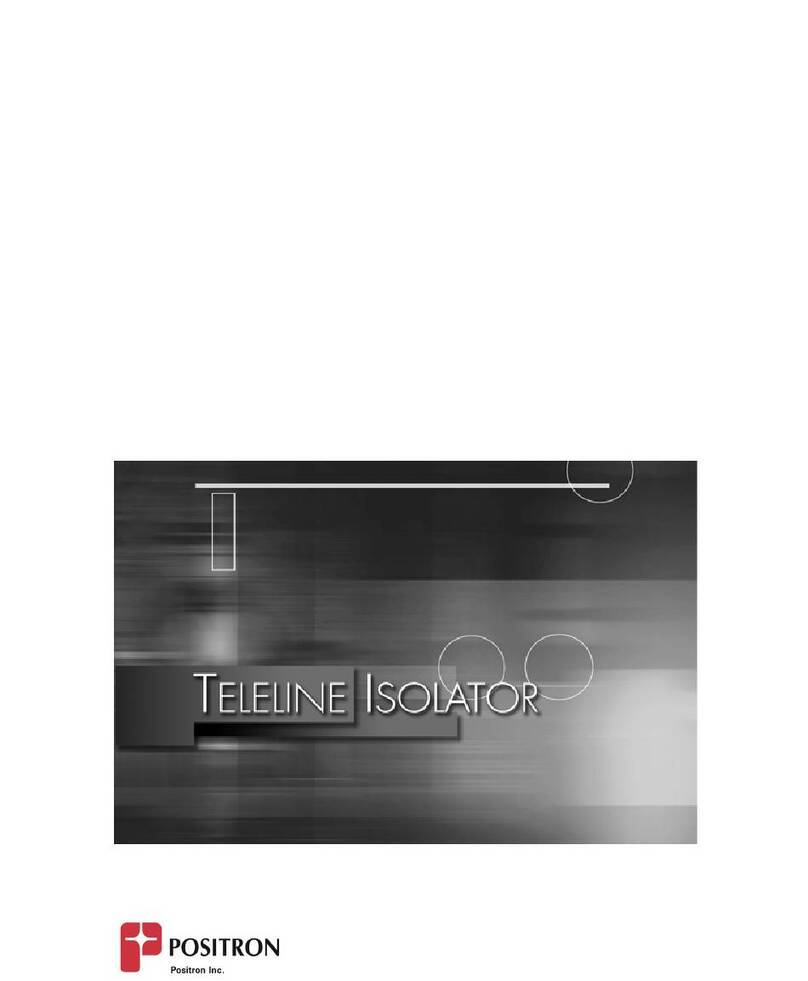
Positron
Positron Teleline 751960/15 General description and installation guide
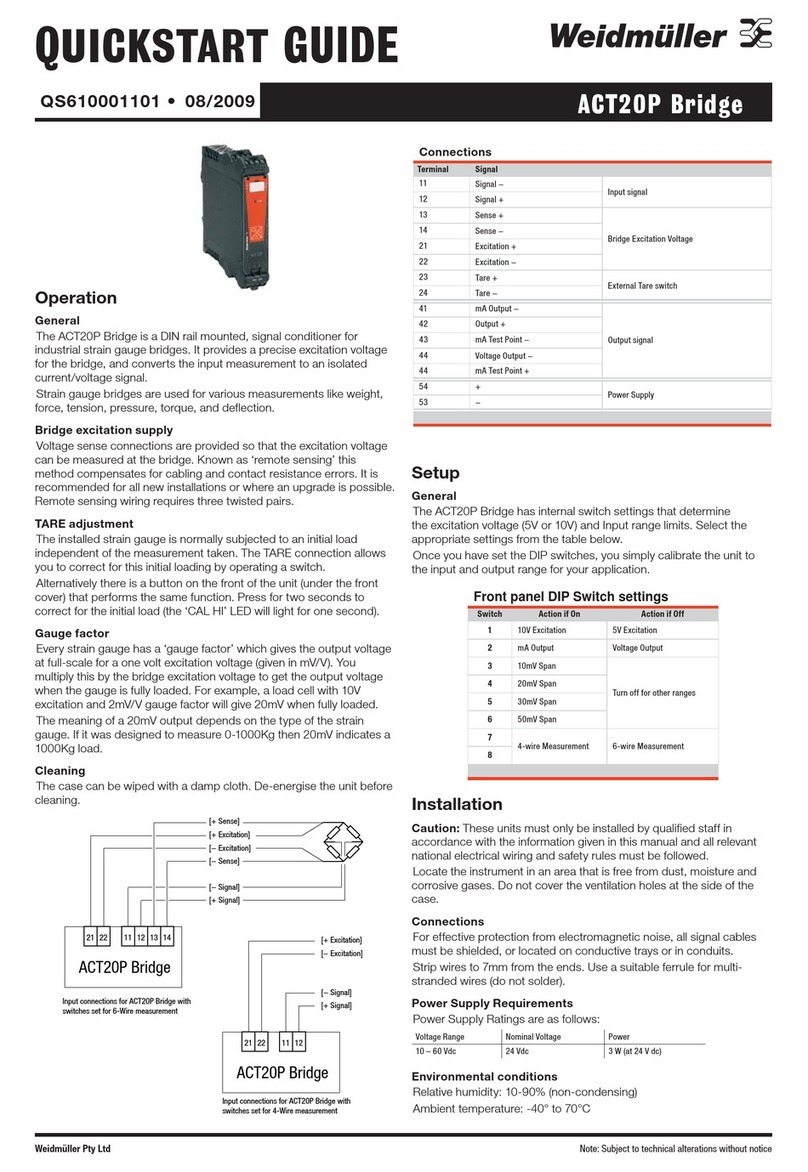
Weidmüller
Weidmüller ACT20P quick start guide

Intel
Intel NetStructure 1300 Series user guide
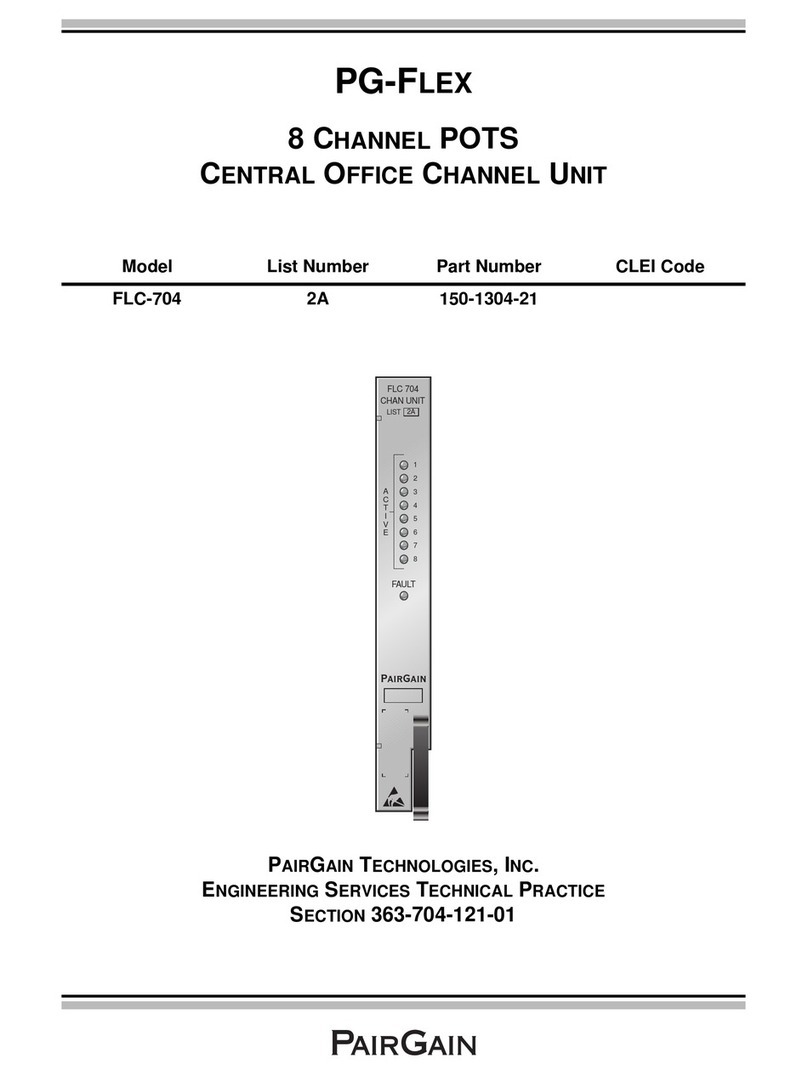
PairGain
PairGain PF-FLEX FLC-704 manual
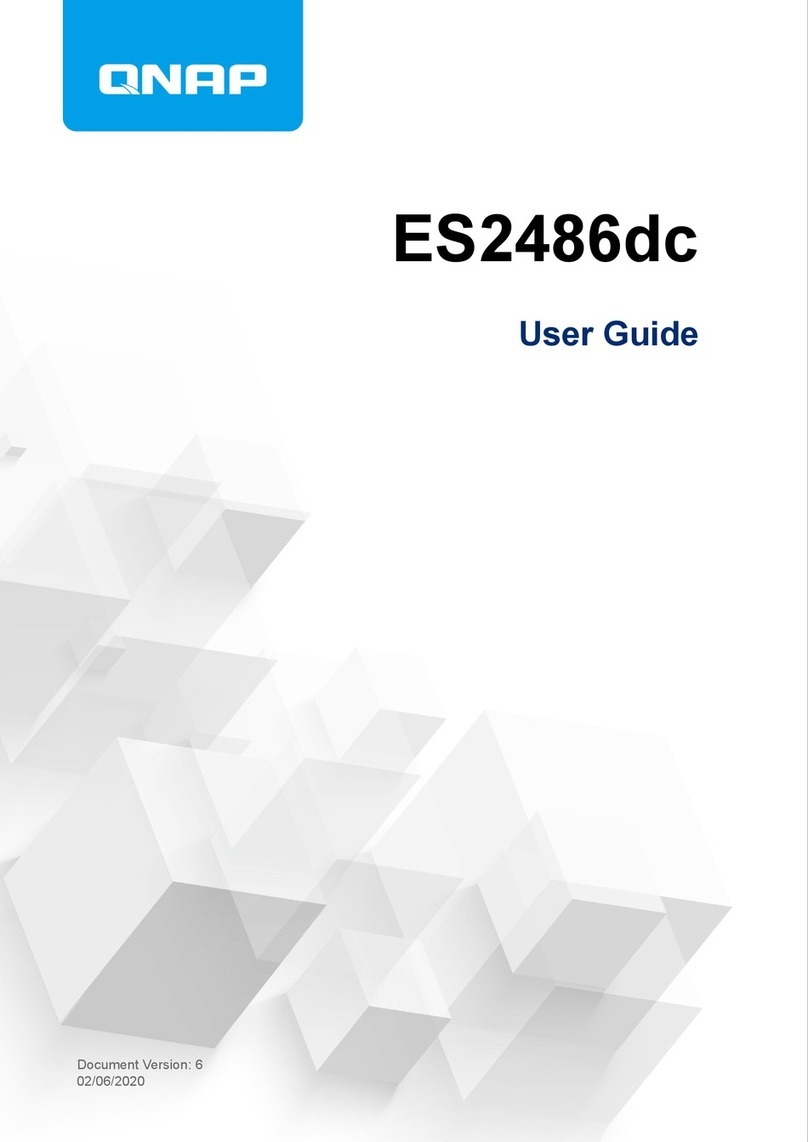
QNAP
QNAP ES2486dc user guide

Centrica
Centrica Panoramic Power PAN-2-H-US/EU Installation and configuration guide
